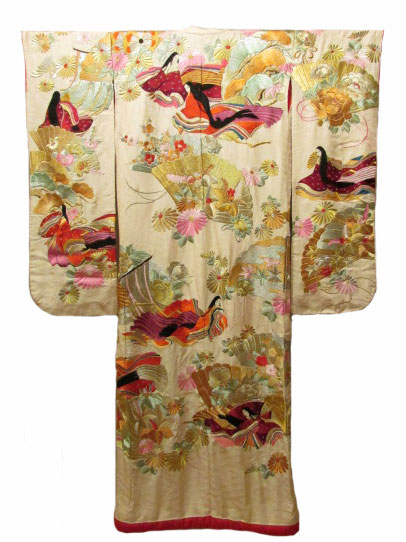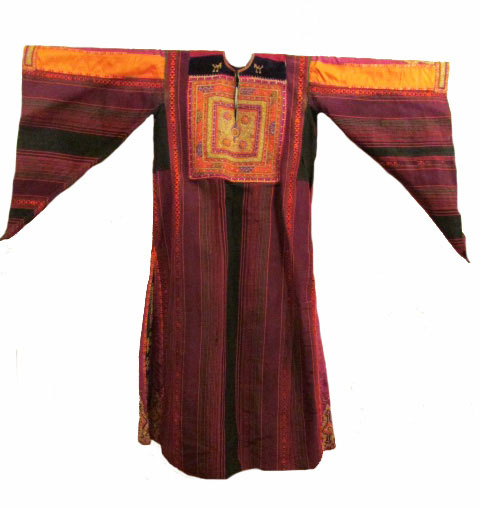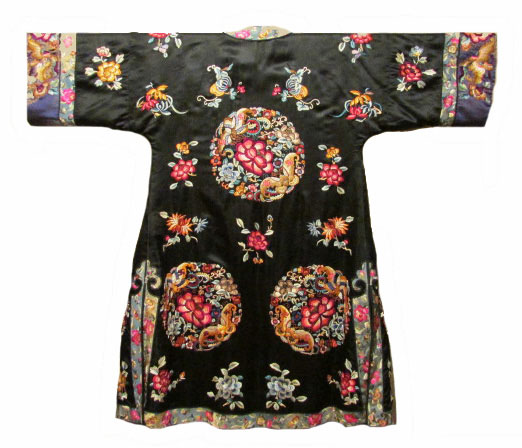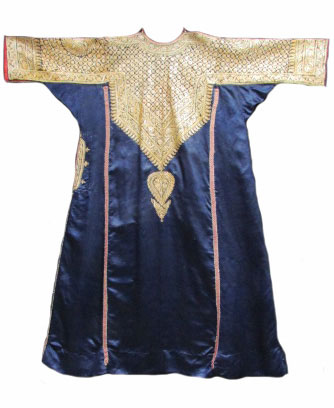Origins by Design (2013)
Dress is an element of material culture found in a variety of forms in all parts of the world. A garment’s shape and design details reflect its place of origin by visually communicating the geographic, technological, social, religious, and artistic forces of a culture and time period. For example, construction details such as fibers, dyes and weaves often reflect available textile construction and trade technologies. Quality of construction may reflect an individual’s status in society. Thick wool or airy silk can reflect a particular climate in a particular geographic location. The long length of a kaftan or the concealing wrap of a kimono may reflect the principles of modesty, fundamental to many religions and cultures around the world. Embroidery designs often reflect local floral and fauna, as well as social practices, religious beliefs, or political events and affiliations. Dress also provides an intimate glimpse into history by reflecting the wearer’s size, shape or personal preferences. Dress speaks visually, revealing much with few words.
Click images to learn more. Historical and donor information will appear.



